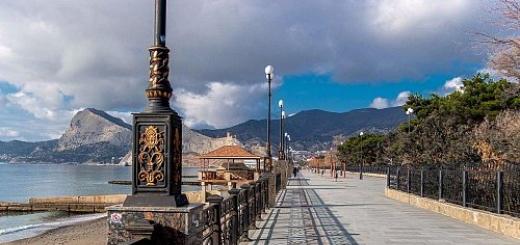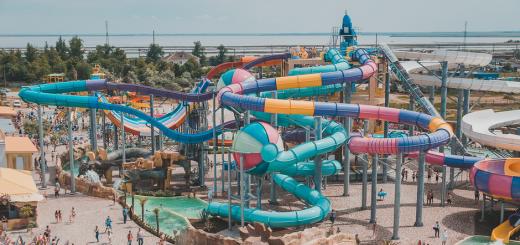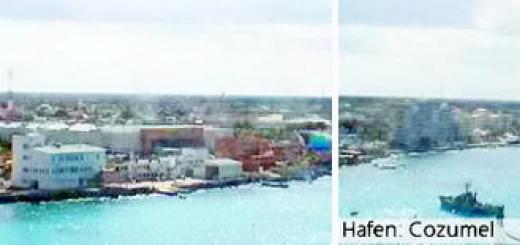The construction contract was signed on January 16, 1625, and work on the construction of the ship began in the spring of 1626. For this, a whole oak forest was cut down: about 16 hectares or a little more than a thousand trees. The construction of the future flagship was carried out at the Blasienholmen shipyard near Stockholm.
About 400 people took part in the creation of Vasa. These were the best carpenters, blacksmiths, joiners, woodcarvers, sailing craftsmen and many others. The ship was supposed to be a real work of art. The king himself took part in all this action, he also approved the dimensions of the future ship and its weapons. The construction of "Vasa" was followed not only by the inhabitants of Sweden, but also by neighboring countries. At that time, "Vasa" really was big ship. It was 65 meters long and 12 meters wide.
In 1627, the Vasa shipbuilder Henrik Hibertsson died, and Hein Jacobsson continued his work. For almost the entire year 1628, the best craftsmen were engaged in finishing the sailboat, which was supposed to impress the enemy not only with its military power, but also with artistic beauty. In the autumn of 1628, the Vasa flagship was launched.
The vessel was decorated with numerous carvings of ancient gods and mythical heroes, the prow figure was made in the form of a gilded four-meter lion with an open mouth, ready to jump.
On August 10, 1628, the ship "Vasa" set off on her maiden voyage to the naval base of Elvsnabben
Sefring Hansson was appointed captain of the ship. The day was warm and sunny, with a light southwesterly wind. At first, the ship was moved with the help of an anchor, throwing it and pulling the ship. When the sailboat approached the exit from the bay, 4 sails were raised (there were 10 sails in total): fore, fore topsail, main topsail and mizzen, which were immediately picked up by a gust of wind. The Vasa banked to leeward, but managed to straighten out. Then another 1,300 meters passed, and a new gust of wind tilted the ship again. This time it was not possible to level the ship, water poured through open gun hatches, Vasa fell on board and sank in a matter of minutes with raised sails and flags.
It sank near the island of Bekkholmen at a depth of about 30 meters, so only the tops of the masts were visible from the water (the height of the Vasa grotto was about 50 meters). Fortunately, most of the sailors and passengers of the ship managed to save the sailors from the boats that accompanied the ship.
The surviving captain of the Vasa, Sefring Hansson, was immediately handed over to the court. In addition to him, the owner of the shipyard and shipbuilder Hein Jacobsson, who led the completion of work after the death of Hibertsson, appeared before the court. As a result of the investigation, the court found out that the main cause of the disaster was the incorrect design of the vessel - the Vasa was too narrow and unstable. But since the size of the ship was approved by the king himself, and all the construction was carried out clearly according to his instructions, there was no one to blame, and the case was closed.
On August 25, 1956, the wreck was discovered! Work on preparing the sailboat for lifting was carried out until 1961
The most difficult task after raising Vasa to the surface was how to save a tree that had lain on the ground for three hundred years. seabed. A special boathouse was built around the sailboat, in which the Vasa hull was continuously irrigated for 17 years with a solution of polyethylene glycol, which replaced water. In addition to the hull itself, leather goods, ship's papers and documents, a bible, dishes, preserved barrels of gunpowder, and personal belongings of the crew were raised from the bottom of the Baltic. Time did not spare mostly iron, but everything else was quite well preserved. Even six sails have been preserved, which were never raised on the yards. These are the oldest sails in the world! Over 700 carved gilded sculptures that adorned the ship were removed from the ship.
Griffins, dolphins, mermaids, mythical heroes and gods - all of them are now on display in a specially built museum, along with the main attraction - the Vasa ship itself. The official opening of the Vasa Museum took place in 1990, 29 years after the ship was raised! This unique museum is located on the island of Djurgården and is one of the most popular attractions in Stockholm, annually visited by several million people from all over the world.
How many years do ships live? The exact answer to this question, most likely, cannot be found in textbooks on maritime affairs.
Then you can try to find the oldest operating ship in the fleet.
The Black Sea Fleet of the Russian Federation, which is based in Sevastopol, has the oldest ship of the Russian Navy - the rescue catamaran ship "Commune", which has been in service for 99 years. (The article was written in 2012. At that time, Crimea was a Ukrainian autonomy. Today Crimea and Russia are reunited).
2. Rescue catamaran "Commune" - the oldest ship of the Black Sea Fleet of Russia. November 12, 2012 will mark the 100th anniversary of the laying of the ship. The project of the first specialized double-hull submarine rescue vessel in Russian history was developed back in 1911 by order of the Naval General Staff. The German catamaran-rescue "Volcano" was used as a prototype. The original name of the court was "Volkhov", and the name "Commune" was received in 1922. 
3. "Commune" has a displacement of 3100 tons, its length - 81 m, width - 13.2 m, draft - 3.7 m.
Full speed - 8.5 knots, and cruising range - 4000 miles.
There is no armament. Specialist. equipment: ship lifting equipment - the left hull for 80 tons, the right hull - for 30 tons. Crew: 23 people.
It should be noted that the ship's hull is made of Putilov steel and is, of course, not in perfect, but in good working condition. The ship is constantly undergoing ongoing repairs, because, of course, even by human standards, it is no longer even pre-retirement, but deeply retired. 
4. Climb up the ladder to the "Commune" to get to know the veteran better. 
5. Plate with a brief history ship.. 
6. There is another sign in the wardroom. It was minted in the year of the launch of the vessel - in 1915.
It is interesting that (and this is noticeable on the plate) the coat of arms of the Putilov factory was changed much later. 
7. "Kommuna" - a catamaran-type ship, a mobile platform with a descent module moves between its sides.
It is driven by four cable drives located in pairs on the sides of the vessel in the front and rear parts. 
8. View of the platform from the upper truss 
9. Huge drums with cables allow you to immerse the descent vehicle to a depth of up to 1 kilometer 
10. Ropes of drives of the platform of the descent underwater vehicle 
11. The main object of the "Commune" is a working remote-controlled uninhabited underwater vehicle RTNPA. Allows you to work at depths up to 1 km (limited by the length of the cable). Designed for search and detection of underwater objects using sonar, lifting loads up to 150 kg, cutting cables, etc. 
12. RTNPA is equipped with 4 video cameras, as well as a pair of manipulators. Manipulators are interchangeable, designed for various purposes - capturing an object, installing a radio beacon, grabbing a cable, biting or cutting.
The device is equipped with 10 engines, allowing for exceptional maneuverability of the device 
13. A manipulator with a cutting disc that allows cutting metal and cables at depths up to 1 km 
14. All electronic systems are in yellow capsules. When diving, all the air is forcibly pumped out from there. This ensures complete sealing of the capsules by compressing with water pressure. 
15. The control bridge of the descent underwater vehicle. Machinery and equipment made in Norway 
18. Navigation bridge of the ship. 
19. The steering wheel and some elements have been preserved since the date of launching the ship - since 1915 
20.
21.
22. The vessel "Kommuna" is based in the Streletskaya Bay of Sevastopol on the rented berths of the Naval Forces of Ukraine.
Here the warships of Russia and Ukraine stand side by side 
23. Searchlight on the upper bridge 
24. The highest cutting is located at an altitude of more than 20 meters above sea level 
25. Spare screws 
26. Anchor chain length indicators 
27. The chain goes to sea... 
28. Engine room. Initially, two six-cylinder diesel engines of the Riga Felzer plant with a capacity of 600 hp each were installed as the main engines on the Commune. (310 rpm). Subsequently, they were replaced by diesel engines with similar characteristics of the Kolomna plant. 
29. System of emergency sound signals in case of emergency 
30.
31. There is also Zh... 
32. Plate galley 
33. Soon the team has lunch 
34. Piano in the officer's wardroom. It was installed during the construction of the ship. Currently, it is not possible to take it out due to the difference in dimensions and doorways. 
35. Heading indicator 
36. In some places on the "Commune" there are still pre-revolutionary tablets 
37. Ammeters 
38. Storm ladder 
39. On the Day of the Russian Fleet, which will be celebrated on July 29, 2012, the ship will perform the task of the Neptune escort ship. In this regard, the team is painting lifeboats for the holiday parade 
40. For the first time, the rescue ship was used for its intended purpose in the summer of 1917, when the submarine AG-15 sank with an open hatch in the Aland skerries during a training dive. Despite the fact that the rescue work was hindered by a strong storm, on June 16 (29) at 00 hours 50 minutes the boat was raised by the Volkhov forces. Within a month, the boat was repaired by the "rescuer" crew, and it was put back into operation. On September 24 (October 7), 1917, the submarine "Unicorn" sunken during a navigational accident was successfully raised by the rescue ship "Volkhov" from a depth of 13.5 meters. 
41. From May 15 to September 13, 1928, "Kommuna" performs work to raise the sunken on June 4, 1919 in the Koporskaya Bay Gulf of Finland English submarine L-55. The boat was raised to the surface from a depth of 62 meters by a stepped method on July 21, 1928. And again, everyday work: lifting the sunken boat of the Marine Guard and the tugboat KP-7, ensuring the testing of new submarines and repairing the ships of the Baltic Fleet. "Commune" raised from the depths the submarines "Bolshevik", M-90, a torpedo boat and an aircraft that had crashed ... 
42. With the beginning of the Great Patriotic War rescue ship "Commune" is based in Leningrad. Since March 1942, 32 Commune divers have been working on the Ladoga Road of Life. Part of the crew participated in landing operations on the Neva (and this is with 40% shortage). During this time, the sailors of the "Commune" raised four KV tanks, two tractors and 31 cars from the bottom. "Communards" prepared 159 light divers for the fleet, repaired six M-type submarines. the floating base of the OVR "TsO" Pravda ", docked two "pikes" and several "small hunters" ... 
43. In 1944, "Commune" raised 14 sunken objects with a total displacement of 11,767 tons, provided assistance to 34 emergency ships and vessels. The entire crew of the ship was awarded medals "For the Defense of Leningrad".
Only in 1954, the veteran ship was able to undergo a major overhaul, during which the main diesel engines were replaced with Dutch-made engines. At the end of November 1956, the catamaran again took up combat duty: the M-200 submarine rammed by the destroyer was raised from a depth of 45 meters. In October 1957, the M-256 submarine was raised from a depth of 73 meters, and in August 1959, a torpedo boat sunk at a depth of 22 meters. In total, the Commune provided assistance to more than a hundred ships and submarines during its service. 
44. In 1967, the veteran ship successfully completed an inter-base transition from the Baltic to the Black Sea, safely arriving in Sevastopol, going around Europe. In Sevastopol, at the Sevmorzavod, the Kommuna was converted into a carrier ship for deep-sea submersibles. The conversion project was completed by the end of 1969 in the Sevastopol Central Design Bureau "Chernomorets". By the end of work at the SMZ (April 27, 1973), the cost of re-equipment of the vessel amounted to about 11 million rubles
45. To date, the rescue vessel "Comunna" has undergone dock repairs, and, despite its age, is actively involved in various activities of the fleet's rescue service with access to the sea. 
This report was prepared with the assistance of the command of the Black Sea Fleet of the Russian Federation
Humans have long sought to create something great by raising the bar over and over again and engaging in an ongoing display of superiority and power. Each new creation, structure or mechanism had to be stronger, faster, higher, wider, larger and more durable than the previous ones. The military industry is no exception. Since ancient times, the strength of the navy largely determined the winner of the battle and clearly demonstrated the alignment of forces. Civilizations constantly fought for fertile land and influence in strategically advantageous sea basins. As a result, thousands of magnificent and amazing ships have been built over the past centuries, designed to testify to the military power of their country. In this compilation, 25 of the largest warships ever launched are waiting for you.
25. America-class amphibious assault ships
America is a huge assault ship and one of the largest ships in the US Navy. So far, only one ship of this configuration exists, and that is USS America, built in 2014. The length of the vessel is 257 meters, and its displacement is about 45,000 tons!
24. Shokaku-class warship
Photo: wikimedia.org
Both Shokaku-class aircraft carriers were built for the Imperial Japanese Navy in the late 1930s. The construction of the ships was completed shortly before the outbreak of World War II in 1941, and these ships were at one time considered in fact "undoubtedly the best aircraft carriers in the world." The Shokaku-class vessel was 257.5 meters long. Both giants were sunk by the enemy in 1944.
23. Audacious-class ships
Photo: anonymous, 09 HMS Eagle Mediterranean Jan1970
The Audacious-class aircraft carriers were designed by military engineers for the British government in the 1930s and 1940s. They failed to show in practice during the fight against Nazi Germany, since the construction of these ships was completed after the end of World War II. The Audacious warships participated in exercises and strategic operations from 1951 to 1979. The length of such a vessel was 257.6 meters.
22. Taiho-class aircraft carrier
Photo: wikimedia.org
Taiho was first launched in 1941, and it was an aircraft carrier of the Empire of Japan, built to participate in the battles of World War II. The total length of the ship was 260.6 meters, and its design assumed invulnerability even in the face of massive bombardment, torpedoing and other hull attacks. The aircraft carrier Taiho was supposed to be able to continue the battle in any conditions, but in 1944 she managed to sink everything. The ship sank after a direct hit by a torpedo fired by the American submarine USS Albacore during a fierce battle in the Philippine Sea.
21. Warship Akagi
Photo: wikimedia.org
There were many glorious ships in the Japanese navy, and Akagi is another famous aircraft carrier of this Asian empire, which served it from 1927 to 1942. The ship distinguished itself first in the Second Sino-Japanese War of the 1930s, and then during World War II in the legendary attack on Pearl Harbor in December 1941. The last battle of the aircraft carrier was the Battle of Midway Atoll in June 1942. Akagi was seriously injured in the battle, and his captain decided to sink the ship himself, which was a common practice among the captains of the Japanese Navy in those years. The length of the ship was 261.2 meters.
20. Charles de Gaulle-class warship
Photo: wikimedia.org
Let's go straight to the numbers - the length of the French flagship Charles de Gaulle is 261.5 meters, and its displacement is 42,500 tons. To date, this warship is considered the largest warship in the entire Western Europe, still launched to participate in exercises and strategic operations. The flagship Charles de Gaulle was commissioned for the first time in 1994, and today this nuclear-powered vessel remains the leading aircraft carrier of the French Navy.
19. Ship INS Vikrant
Photo: Indian Navy
Here is the first aircraft carrier built in India. The length of this warship is 262 meters, and it is about 40,000 tons. Vikrant is still in the process of fitting out and is scheduled for completion in 2023. The name of the aircraft carrier from the Indian language is translated as "courageous" or "daring".
18. English warship HMS Hood
Photo: wikipedia.org
And this is one of the oldest warships on our list of the largest naval ships in the world. HMS Hood was the last battlecruiser built for the British Royal Navy. Launched in August 1918, HMS Hood was 262.3 meters long and boasted a displacement of 46,680 tons. The impressive cruiser was sunk by the Germans during World War II in the Battle of Denmark Strait in 1941.
17. Graf Zeppelin-class warship
Photo: wikipedia.org
The four Graf Zeppelin-class ships were to become Kriegsmarine ships (Kriegsmarine, the German navy of the Third Reich era), and their construction was planned as early as the 1930s. However, due to political differences between the German Navy and the Luftwaffe (Luftwaffe, air Force in the compositions of the Reichswehr, Wehrmacht and Bundeswehr), due to disagreements among the highest ranks of the Kriegsmarine itself and because Adolf Hitler lost interest in this project, none of these imposing aircraft carriers was ever launched. As planned by the engineers, the length of such a ship was to be 262.5 meters.
16. Yamato-class warships 
Photo: wikimedia.org
The Yamato-class ships were Imperial Japanese Navy warships built and launched during World War II. The maximum displacement of these giants was 72,000 tons, for which they are still considered one of the heaviest warships in the history of the navy of the whole world. The total length of the Yamato-class vessel was 263 meters, and although 5 of these warships were originally planned, only 3 were eventually completed.
15. Clemenceau-class vessel
Photo: wikimedia.org
The Clemenceau-class aircraft carriers were a pair of warships that served with the French Navy from 1961 to 2000. In 2000, one of these aircraft carriers, Clemenceau, was disarmed and dismantled, and the second, Foch, was transferred to the Brazilian Navy. The aircraft carrier Foch remains in the port of Sao Paolo to this day. Its total length is 265 meters.
14 Essex Aircraft Carriers 
Photo: wikimedia.org
Here is the foremost power of the US Navy during World War II, the Essex-class aircraft carrier. In the 20th century, this type of warship was the most common type of large warship. There were 24 of them in total, and 4 of these aircraft carriers are now open to the public as floating museums of the history of the American Navy. So if you happen to go to the states and want to get on board a real battle cruiser, the ships Yorktown, Intrepid, Hornet and Lexington will happily open the veil of military secrets of the mid-20th century for you.
13. Combat aircraft carrier Shinano
Photo: wikimedia.org
Shinano was a huge aircraft carrier that served in the Imperial Japanese Navy during World War II. The ship was 266.1 meters long and weighed 65,800 tons. However, the Japanese rushed to launch it, because at that time Shinano still needed design work. Probably for this reason, the giant aircraft carrier lasted only 10 days in the war and was sunk at the end of 1944.
12. Iowa-class warship
Photo: wikipedia.org
Fast battleships Iowa class were built by order of the US Navy in 1939 and 1940 in the amount of 6 combat units. As a result, only 4 out of 6 ships were launched, but all of them took part in a number of important confrontations for America, including World War II, the Korean and Vietnam Wars. The length of these artillery armored ships was 270 meters, and the displacement was 45,000 tons.
11. Lexington-class aircraft carrier
Photo: wikipedia.org
In total, 2 such aircraft carriers were built, and both ships were designed by order of the US Navy in the 1920s. This class of ships performed very well and was seen in many battles. One of these warships was the aircraft carrier Lexington, which was sunk by the enemy during the Battle of the Coral Sea in 1942. The second ship, the Saratoga, was blown up during an atomic bomb test in 1946.
10. Kiev-class warship
Photo: wikimedia.org
Also known as Project 1143 or the aircraft carrier Krechet, the Kyiv-class ship was the first Soviet aircraft carrier to transport fixed-wing aircraft. To date, of the 4 ships built, one has been dismantled, 2 are out of order, and the last, Admiral Gorshkov, was sold to the Indian Navy, where it is still in service.
9. Queen Elizabeth class warship
Photo: UK Department of Defense, flickr
She is one of two Queen Elizabeth class ships and both are still in the process of fitting out for the Royal Navy. The first ship is HMS Queen Elizabeth, and all work on its construction will be completed in 2017, the second - HMS Prince of Wales, which is scheduled to be launched in 2020. The length of the hull of HMS aircraft carriers is 284 meters each, and the maximum displacement is 70,600 tons.
8. Ship type Admiral Kuznetsov
Photo: Mil.ru
The Admiral Kuznetsov-class aircraft carriers were the last warships of their kind built for the Soviet Navy. In total, 2 ships of this class are known, and this is the Admiral Kuznetsov board (launched in 1990, still in the ranks of the Russian Navy), as well as Liaoning (sold to China, construction was completed in 2012). The hull length of aircraft carriers of this class is 302 meters.
7. Midway class aircraft carrier
Photo: wikimedia.org
The Midway-class aircraft-carrying cruiser project proved to be one of the most reliable and enduring design solutions in the history of the Navy. The first flagship of this type, launched in 1945, was the USS Midway, which served the US Army until 1992. The last task of the vessel was participation in the operation "in the desert" in 1991. Another ship of this class is the USS Franklin D. Roosevelt and was retired from service in 1977. A third aircraft carrier, USS Coral Sea, was placed on standby in 1990.
6. USS John F. Kennedy
Photo: wikipedia.org
Secondly nicknamed Big John, the aircraft carrier USS John F. Kennedy is one of a kind and the last non-nuclear US Navy ship. The vessel reaches 320 meters in length, and once it was even capable of conducting combat operations against submarines.
5. Forrestal-class warship
Photo: wikipedia.org
Here is one of 4 Forrestal-class aircraft carriers, designed and built specifically for the US Army in the 1950s. The ships Forrestal, Saratoga, Ranger and Independence were the first supercarriers to combine significant displacement, elevators and a corner deck. Their length is 325 meters, and the maximum weight is 60,000 tons.
4. Combat ship Kitty Hawk
Photo: wikipedia.org
The Kitty Hawk class was the next generation of US Navy supercarriers after the Forrestal class. 3 ships were built in this line (Kitty Hawk, Constellation, America), all of them were ready for launching in the 1960s, and today they have already been decommissioned. The hull length is 327 meters.
3. Nimitz-class aircraft carrier
Photo: wikimedia.org
The Nimitz ships are 10 nuclear-powered supercarriers belonging to the American Navy. With a total length of 333 meters and a maximum displacement of over 100,000 tons, these vessels are considered the world's largest warships underway. They have taken part in many battles around the world, including Operation Eagle Claw in Iran, the Gulf War, and the recent conflicts in Iraq and Afghanistan.
2. Warship Gerald R. Ford
Photo: wikimedia.org
This type of ship is planned to replace some of the still operational Nimitz-class supercarriers. The hull of the new vessels will be very similar to the Nimitz cruisers, but in terms of technical equipment, the Gerald R. Ford class will be much more modern. In particular, such innovations as an electromagnetic catapult for launching aircraft and many other technological solutions designed to increase the efficiency of the ship and reduce the cost of its operation. The Gerald R. Ford aircraft carriers will be slightly longer than the Nimitz class, at 337 meters.
1. Combat vessel USS Enterprise
Photo: wikimedia.org
Here is the leader of our list and the first supercarrier with a nuclear power plant. USS Enterprise is the longest (342 meters) and most famous warship in the world. It has served the US Army for 51 years and is therefore also considered one of the longest lasting US aircraft carriers. The USS Enterprise saw action in many battles including the Cuban Missile Crisis, the Vietnam War, and the Korean War. In addition, this cruiser took part in the filming of feature films. For example, some scenes from Star Trek and Top Gun (Star Trek) were filmed on the deck of the USS Enterprise, which is rightfully considered the largest American aircraft carrier and one of the 10 most dangerous warships on the planet.
Our wicker was lucky. It is almost three-quarters covered with water - the cradle of all life. All the inhabitants of the Earth, one way or another, once left the primitive ocean or stayed there. But land people had to look for ways to move through an unfriendly element. So there were boats, ships and ships. The first attempts to create something capable of moving on water date back to cave times. Therefore, information about prehistoric ships has come down to us in the form rock art. But later designs have been preserved in material form.
The oldest found ship is most often called the ship, which is now stored in the Kyrenia fortress-museum. Several halls are allotted for this exposition. They exhibit the skeleton of the ship itself, the utensils and goods found on it.
Archaeologists claim that the ship belongs to the legendary times of the reign of Alexander the Great, i.e. 300 BC. A small merchant ship was carrying amphorae of wine, almonds and other valuable goods when they were attacked by pirates. The ship was robbed, taking away everything more or less valuable and the ship's cash desk, and sunk.
The ship lay under water for more than two millennia, when in 1968 a diver accidentally stumbled upon it. Archaeologists, with all possible precautions, removed his skeleton from under the water and moved it to the museum to the delight of the audience.
The age of the ancient ship from Kyrenia is considered to be confirmed, which made it possible to put it in first place in our rating. But there are many older vessels that are still undergoing examination. For example, more recently, archaeologists from Turkish city Ankara discovered a ship whose age dates back only approximately - about 4000 years.

For now historical relic still lies at the bottom of the sea, near the ancient port. It can take several years to rise, because you need to protect its parts from destruction, carefully disassemble and return to land. The work doesn't end there. Each plank must be cleaned of salt and impregnated with special solutions to stop decay. After proper processing, the ancient ship, of course, will not float, but it will stand in the museum for many years.
So uncomplicated is the name of one of the oldest courts. This is the oldest clipper that has survived to this day relatively unharmed. It was launched in 1864 and served faithfully for many years, transporting emigrants from England to Australia. It is believed that about 70% of the current population of Australia are the descendants of people who arrived on this particular ship. True, then it was called "City of Adelaide". But what does it change?

For a long time it served as a floating hospital, then it became a training ship. And already recently it was decided to transfer it to Australia, for which this ship is the most valuable relic. It was towed to the coast of the Green Continent, where, after reconstruction and restoration, it will become a floating museum, a symbol of the most important era for the state.
This is just a unique exhibit - the most ancient sailing ship. It has survived to this day unchanged. And although last years the ship is permanently laid up; formally, it is still part of the American combat fleet.

Films can be made about the adventures of this ship. It was launched into the water in 1797, participated in several wars, where it showed itself excellently. Its hull is made of extra strong Virginian oak, making cannonballs simply bounce off of it. For this, he received the nickname "Iron-sided old man."
The year 1830 almost became fatal for him. A ship of this age was already considered junk and was destined for scrapping, but fate intervened. A poem dedicated to the ship was published, which stirred up the public. People demanded to keep the ship for history.
Now Ironsides old man stands at the pier in Boston and receives up to half a million tourists annually. Not surprising, because it closes the famous hiking trail Freedom. This ship is a real historical relic, but it needs constant care of people. Without it, the ship would die in less than a year, simply from rot.
The American Constitution is the oldest sailing ship that is formally in service. But in Russia there is a ship that actually belongs to the ranks of the navy, is on the move and performs its functions. This is the Commune submarine rescuer.

It was launched back in 1913. Then it was called Volkhov. The ship received its current name in 1922. The list of his merits includes many rescued submarines, participation in the Second World War. Later it was modernized, equipped with an underwater robot.
The Commune recently celebrated a unique anniversary - a century since the launch of the ship. Few vessels cross such a boundary, and only a few at this age are able to perform their functions. This ship is one of them. Moreover, this is the oldest ship not only in the Russian Navy, but also in the world.
An amazing find that amazed the world: archaeologists discovered a 23-meter vessel that had lain at the bottom of the Black Sea for more than 2,400 years. What does an untouched Greek ship hide in itself? Why him appearance so well preserved after 24 centuries?
Unique Relic
A 23-meter ship, considered ancient Greek, was discovered at the bottom of the Black Sea, after its crash more than two thousand years ago. The mast, rudder and rowing benches of the vessel are in excellent condition. Due to the lack of oxygen at depth, the appearance of the old ship has been preserved.

Professor John Adams from the English University of Southampton is surprised, because the ship lay at a depth of more than 2 kilometers, but it was perfectly preserved. According to him, this find will now radically change our understanding of shipbuilding and navigation in the ancient world.
It is believed that this ship was a merchant ship. In the British Museum there is an exhibit "Siren's Vase", made of ancient Greek ceramics, which depicts a similar vessel. By the way, this work dates from approximately the same period as the find of archaeologists. The vase depicts the story of how the ship of Odysseus plowed the sea, which was filled with sirens. According to legend, the hero Homer attacked the mast to oppose their songs.

Unexpected finds
The ship was one of at least 60 shipwrecks found by an international team of marine archaeologists and surveyors. For three years, scientists have explored the bottom of the Black Sea to gain a deeper understanding of the impact of prehistoric changes in water levels.

The study proved that the Greek ship is the oldest and best preserved among all the finds. Previously, the Cossack raider fleet of the 17th century, Roman merchant ships, complete with amphoras, had already been discovered. To determine the age, divers removed a small piece of solidified carbon from the ship.


















